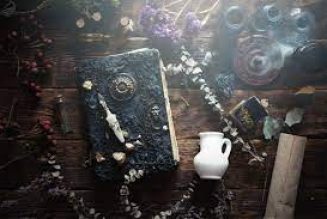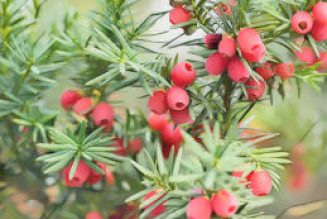This is an old Gaelic term for the four points of the compass, north, south, east and west.
They are important in magic, as the magic circle should always be orientated to them.
Early Christian churches were also carefully orientated, with the high altar in the east; though in modern days this custom is not invariably observed, probably because present-day scarcity of land compels church architects to build as best they can on the ground available.
The Great Pyramid is orientated with remarkable accuracy.
The magic circle usually has a candle or lamp at each of the four quarters.
The powers of the Four Elements are naturally connected with the Four Airts.
Different exponents of magic have differing attributions of these; but the most usual one in the Western magical tradition is air at the east, fire at the south, water at the west, and earth at the
north.
This attribution is based on the quality of the prevailing winds.
In Britain the south wind brings heat and dryness, while the west wind usually brings warm rainy conditions.
So these quarters are regarded as the places of fire and water respectively.
The wind from the east is cold, dry and bracing, so this is the place of the powers of air.
The north wind is cold and freezing, coming from the place of eternal snow.
It represents the darkness of earth.
In other parts of the world, of course, these conditions will not apply; so the truly talented magician, unlike one who has merely read the subject up in books, will note the prevailing winds of his own country, and invoke the Four Elements accordingly.
The Gaelic Airts had a traditional association of colours attributed to them.
The east took the crimson of dawn; the south the white light of high noon; the west the brownish-grey of twilight; and the north the black of midnight.
It is notable in this connection that the song “Black Spirits” referred to in Shakespeare’s Macbeth was not written by him, but occurs in another old play, Middleton’s The Witch, and may well have been an old folk-rhyme.
It runs as follows:
2 Alphabets,
Magical “Black spirits and white,
Red spirits and grey,
Mingle, mingle, mingle,
You that mingle may !
Firedrake, Pucky,
make it lucky.
Liard, Robin,
you must bob in,
Round, around, around
about, about !
All ill come running in,
all good keep out!”
In fact, it is calling upon the spirits from the four cardinal points, by the colours of the old Gaelic Airts, and was thus singularly appropriate to the Scottish witches Shakespeare was depicting. Firedrake, Puckey, Liard and Robin were the names of the witches’ familiars.
A present-day witches’ version runs as follows :
“Black spirits and white,
Red spirits and grey,
Come ye and come ye,
Come ye that may !
Around and around,
Throughout and about,
The good come in
And the ill keep out.”
The magical ideas of dancing or circumambulating deasei/ or tuathal, are connected with the Four Airts. Deaseil, or sunwise, is fortunate, and a movement of blessing ; but tuathal, or widdershins, is generally a movement of adverse magic and cursing.
These names come from the Scots Gaelic words for the cardinal points; tuath, north; airt, east; deas, south ; and iar, west. Airt was the starting-point of invocations; so one turned right-handed to deas, or left-handed, literally the sinister side, to tuath.







